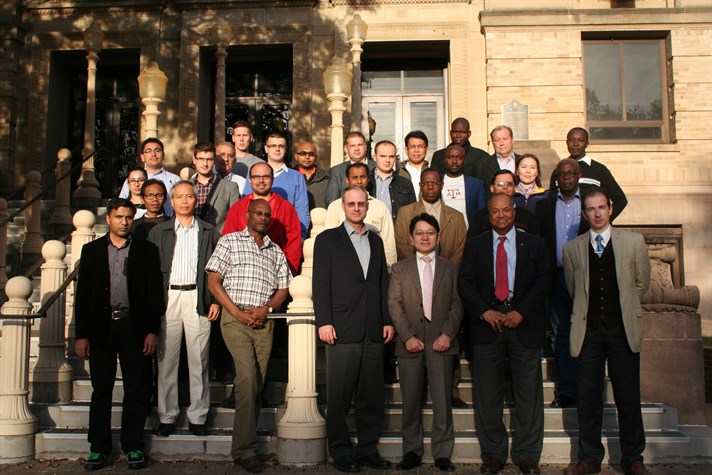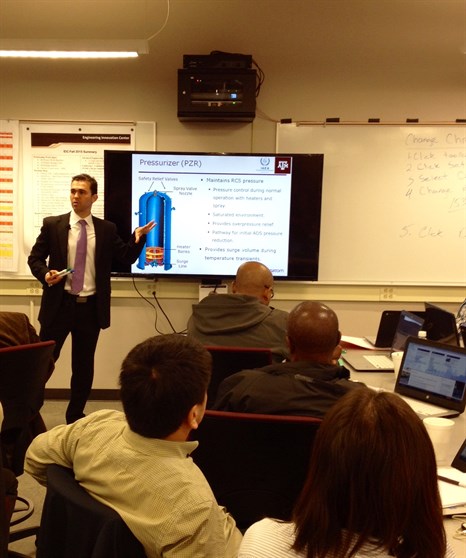
The Department of Nuclear Engineering at Texas A&M University recently hosted a two-week International Atomic Energy Agency (IAEA) interregional training course that familiarized participants with an understanding of the physics and technology behind water-cooled reactors. The course used a suite of reactor simulators to teach a variety of water-cooled reactor technologies and their fundamental operations to 25 delegates from 22 different countries who are aspiring to implement nuclear technologies in their home nations.
The training course was funded by IAEA’s Department of Technical Cooperation (TC) underneath the focus of an interregional project titled: ‘Supporting Member States to Evaluate Nuclear Reactor Technology for Near-Term Deployment.” The course was hosted at Texas A&M because of the established history of cooperation between the two organizations, which was formalized through a Practical Arrangement in 2014. The course gave an overview of the design characteristics associated with pressurized water reactors (PWRs), boiling water reactors (BWRs) and pressurized heavy water reactors (PHWRs), as well as their related safety systems and design basis events.
“Texas A&M has a very good relationship with TC,” said Chad Painter, IAEA senior nuclear engineer. “They liked the collaborative efforts they have had in the past with Texas A&M. We’ve had the inter-regional course hosted in Korea, Spain, and Italy as well as numerous other national level courses and it really had to do with where the funding source was coming from.”
The IAEA has maintained a course in nuclear reactor simulation and education for almost 20 years, according to Painter. The training course falls in line with one of IAEA’s primary initiatives for educating countries either developing or considering developing nuclear faculties and providing them with a better understanding of these technologies. The course was composed of new country delegates who had academic training in nuclear engineering or had ties to nuclear project assessments, developments, or both, within their home countries. In working to educate these countries who are seeking to implement nuclear power, the IAEA is also helping to secure the safe use of nuclear assets in the future.

“In this particular program we are pushing the technology education as member states make a determination [on pursuing nuclear power] after looking at their projected energy needs in optimum energy mix in the future,” said Painter. “As these countries come to some sort of a decision that they want to pursue a nuclear program, we want to make sure these member states pursue it in a safe and secure way. It helps them to avoid huge mistakes and we want to have them achieve their goals in a way that is going to be safe — because a reactor safety issue in one country affects the nuclear industries around the world.”
The course was also more practical, according to Painter, because it is more cost-effective and less time consuming than attempting to train these individual on full-scope reactor simulators that can take a significant amount of time to learn and understand. This training course is one of several collaborative efforts Texas A&M and the IAEA have shared in the past, which include programs to promote more women in science, technology, engineering and math (STEM), to develop electron beam technologies and to provide educational training and public outreach programs, among others.
“The course served as a great event of nuclear engineering globalization and our department at Texas A&M University was honored to be part of it,” said Dr. Pavel Tsvetkov, who teaches a course based on nuclear reactor simulators at Texas A&M. “The IAEA training course gave us and our students the opportunity to engage with the lecturers, share, observe and discuss various simulators and teaching techniques involving these simulators. I will certainly be taking this experience and the lessons learnt from it into my course to further enhance the state-of-the-art quality of our academic programs that we have continued to develop through these global experiences.”
To see the IAEA's coverage of the event, click here.